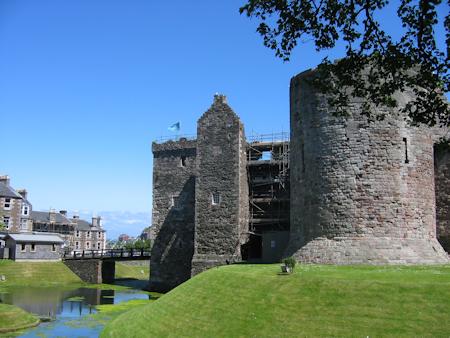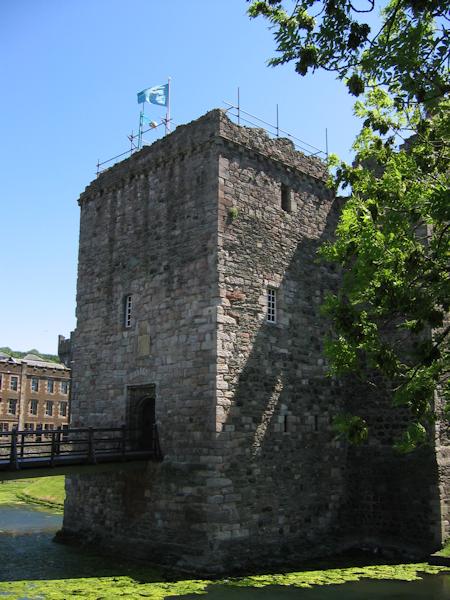
Rothesay Castle
Rothesay Castle is one of the few castles that were first built by the Vikings. It was a key strategic castle in medieval Scotland and besieged repeatedly. It was eventually slighted by Cromwell's troops and burned by the Covenanters in 1685.
At the start of the medieval period the islands of Scotland were under the control of the Kings of Norway. Rothesay Castle was built by Magnus Barelegs around 1098 to protect the island of Bute.
Rothesay Under Attack
The Vikings lost Rothesay to King William I of Scotland around 1200. Rothesay Castle was probably built by Walter Stewart, 3rd High Steward of Scotland in the early 1200s.
The castle at this point was an unusual circular shell keep surrounded by a wet moat that connected to Loch Fad.
The new castle was quickly under attack. A fleet led by Ospakr Ogmundsson besieged it in 1230. After three days they managed to break down part of the wall with their axes and took the castle, but with heavy losses. They were rewarded handsomely with treasure and a ransom of 300 silver merks.
In 1263 Haakon IV launched an attack on Bute and again took Rothesay Castle. His campaign was ineffective and this marked the last Norwegian attack on western Scotland.
In the late 13th Century the defences were upgraded. The simple wooden gate was upgraded with a portcullis and four projecting round towers were added allowing the defenders to fire on the ground in front of the wall.
Wars of Independence
During the Wars of Independence Rothesay Castle was again under siege. King Edward's forces took the castle in the late 1290s, but the Scots took it back in 1306.
Edward III of England held it during 1333-1334 before it was again taken by the Scots.
Rothesay Castle was a favourite residence of the Stewart kings. Robert II and Robert III both enjoyed staying here. Robert III made his son Duke of Rothesay in 1401 thereby beginning a tradition of the heir to the throne of Scotland being given that title.
King James IV and James V undertook another programme of work in the early 16th Century. They added a four storey L-plan forework to the gate. The new tower contained royal lodgings and turned the entrance into a tunnel leading into the courtyard. The chapel in the castle was also constructed during this time.
Rothesay was initially garrisoned for the Royalists during the Civil War, but Cromwell's troops took the castle in the 1650s. When they left they partially demolished the structure. Later Covenanters burned it during the Monmouth Rebellion.
Restoration
In the early 19th Century the 2nd Marquess of Bute excavated the ruins. The work was carried on by the 3rd Marquess who managed to stabilise the structure and altered the character of the castle somewhat.
In 1961 it was given to the state and it is now a Scheduled Ancient Monument in the care of Historic Scotland. They run it as a heritage site, open to the public. Facilities available include toilets, a shop and car parking. Inside there are information boards and an exhibition on the castle's history.
Status: Visitor Attraction / Heritage Site
Owner: Historic Scotland
Tel: +44 (0)1700 502 691
Website: www.historic-scotland.gov.uk
Opening Times: 1st April to 30th September Daily 9.30am-5.30pm / 1st October to 31st March Sat-Wed 9.30am-4.30pm


Moat and "Pigeon Tower" at Rothesay

The gatehouse and drawbridge